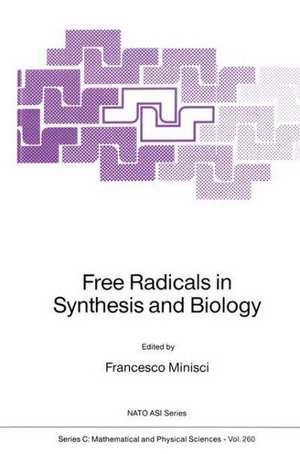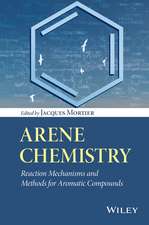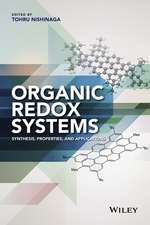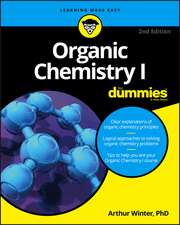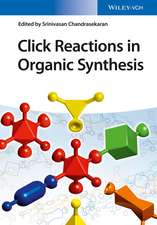Free Radicals in Synthesis and Biology: Nato Science Series C:, cartea 260
Editat de F. Miniscien Limba Engleză Paperback – oct 2011
Din seria Nato Science Series C:
- 24%
 Preț: 797.66 lei
Preț: 797.66 lei - 18%
 Preț: 957.62 lei
Preț: 957.62 lei - 18%
 Preț: 957.13 lei
Preț: 957.13 lei - 18%
 Preț: 1227.52 lei
Preț: 1227.52 lei -
 Preț: 396.40 lei
Preț: 396.40 lei -
 Preț: 403.75 lei
Preț: 403.75 lei - 18%
 Preț: 1239.37 lei
Preț: 1239.37 lei - 18%
 Preț: 1236.51 lei
Preț: 1236.51 lei - 18%
 Preț: 1231.78 lei
Preț: 1231.78 lei - 18%
 Preț: 1229.10 lei
Preț: 1229.10 lei - 18%
 Preț: 1835.21 lei
Preț: 1835.21 lei - 24%
 Preț: 1076.36 lei
Preț: 1076.36 lei -
 Preț: 390.46 lei
Preț: 390.46 lei -
 Preț: 369.63 lei
Preț: 369.63 lei - 18%
 Preț: 1232.41 lei
Preț: 1232.41 lei -
 Preț: 394.51 lei
Preț: 394.51 lei - 18%
 Preț: 1226.24 lei
Preț: 1226.24 lei - 18%
 Preț: 1845.80 lei
Preț: 1845.80 lei -
 Preț: 399.88 lei
Preț: 399.88 lei -
 Preț: 384.28 lei
Preț: 384.28 lei -
 Preț: 390.88 lei
Preț: 390.88 lei -
 Preț: 381.19 lei
Preț: 381.19 lei - 18%
 Preț: 1848.64 lei
Preț: 1848.64 lei - 18%
 Preț: 951.14 lei
Preț: 951.14 lei - 18%
 Preț: 1230.35 lei
Preț: 1230.35 lei - 18%
 Preț: 1236.51 lei
Preț: 1236.51 lei -
 Preț: 401.03 lei
Preț: 401.03 lei -
 Preț: 406.25 lei
Preț: 406.25 lei - 18%
 Preț: 1230.84 lei
Preț: 1230.84 lei -
 Preț: 418.34 lei
Preț: 418.34 lei - 18%
 Preț: 1223.74 lei
Preț: 1223.74 lei
Preț: 400.26 lei
Nou
Puncte Express: 600
Preț estimativ în valută:
76.60€ • 79.48$ • 64.02£
76.60€ • 79.48$ • 64.02£
Carte tipărită la comandă
Livrare economică 17-31 martie
Preluare comenzi: 021 569.72.76
Specificații
ISBN-13: 9789401068925
ISBN-10: 9401068925
Pagini: 508
Ilustrații: 504 p.
Dimensiuni: 155 x 235 x 27 mm
Greutate: 0.7 kg
Ediția:Softcover reprint of the original 1st ed. 1989
Editura: SPRINGER NETHERLANDS
Colecția Springer
Seria Nato Science Series C:
Locul publicării:Dordrecht, Netherlands
ISBN-10: 9401068925
Pagini: 508
Ilustrații: 504 p.
Dimensiuni: 155 x 235 x 27 mm
Greutate: 0.7 kg
Ediția:Softcover reprint of the original 1st ed. 1989
Editura: SPRINGER NETHERLANDS
Colecția Springer
Seria Nato Science Series C:
Locul publicării:Dordrecht, Netherlands
Public țintă
ResearchCuprins
1. Captodative Substituent Effects in Synthesis.- 2. The Influence of gem-Substitution on the CC-Bond.- 3. Iodine Atom Transfer Reactions in Organic Synthesis.- 4. Alkyl Iodides as Source of Alkyl Radicals, Useful for Selective Syntheses.- 5. Introduction of a Single Electron-with-drawing Carbon Substituent into ? -Deficient N-Heteroarenes by Means of Free-Radical Reactions: Strategies and Synthetic Applications.- 6. Free Radical Syntheses of Pyridylderivatives: Influence of the Solvent.- 7. Photoinitiated Radical Reactions of 1-(4?-Pyridyl)-4-Pyridane and Its N-Protio and N-Methyl derivatives. Dimerization and Polymerization Reactions.- 8. Radical Reactions with Organocobalt Complexes.- 9. New Ways of Generating Stannyl Radicals for Organic Syntheses.- 10. Silanes as New Reducing Agents in Organic Synthesis.- 11. Acyl, Imidoyl and Other Hetero-substituted Free Radicals as Intermediates in the Synthesis of Cyclic Organic Compounds.- 12. Some Studies on Carbonyl Radical Cyclizations on the Synthesis of 2-Deoxy-?-D-glycosides by Stereoselective Radical Reactions.- 13. Stereoselective Formation of Linear Aza-Triquinanes by Three Consecutive Radical Ring Closures.- 14. Synthetic Applications of Substitution and Addition Reactions Promoted by Cerium (IV) Ammonium Nitrate.- 15. Use of Homolytic Redox Processes in Organic Syntheses.- 16. One-Electron Redox Reactions between Radicals and Molecules. Dominance of Inner-Sphere Mechanisms.- 17. Electron-Transfer Photosensitization in the Oxidation of Alkyl Aromatics and Heteroaromatics.- 18. Selenium Radical Ions in Organic Synthesis.- 19. A. Synthetically Useful Source of Alkyl and Acyl Radicals.- 20. Chlorination of Hypochlorous Acid. Free-Radical versus Electrophilic Reactions.- 21. Induced Decomposition of Peroxycompoundsin Synthesis: Free Radical Functionalization of Crown Ethers.- 22. Unwanted Synthesis in Combustion and Pyrolysis: Soot and Dioxins.- 23. Polar Effects on Radical Addition Reactions: An Ambiphilic Radical.- 24. The Effect of Temperature in the Reactions of Arenesulphonyl Radicals.- 25. Synthesis of New 5-Nitroimidazoles Highly Active against Anaerobes by Substitution Reactions which Proceed via Radical and Radical-Anion Intermediates.- 26. Electron Spin Resonance Studies of the Reactions of •OH and SO4•- Radicals with DNA, Polynucleotides and Single Base Model Compounds.- 27. Detection of Free Radicals in Biochemistry by Electron Spin Resonance Spectroscopy.- 28. Error in Enzymic Stereospecificity as a Probe for the Occurence of Radical Intermediates.- 29. Kinetics of Peroxyl Radical Reactions in Model Biomembranes.- 30. Rearrangements of Optically Pure Hydroperoxides.- 31. In vivo Detection of Free Radical Metabolites.- 32. The Involvement of Free Radicals in the Metabolism of Drugs.- 33. The Formation of Fluorescent Pigments Due to Radicals in Biological Tissues.- 34. The Chemistry/Biochemistry Interface in Free Radical Reactions.
